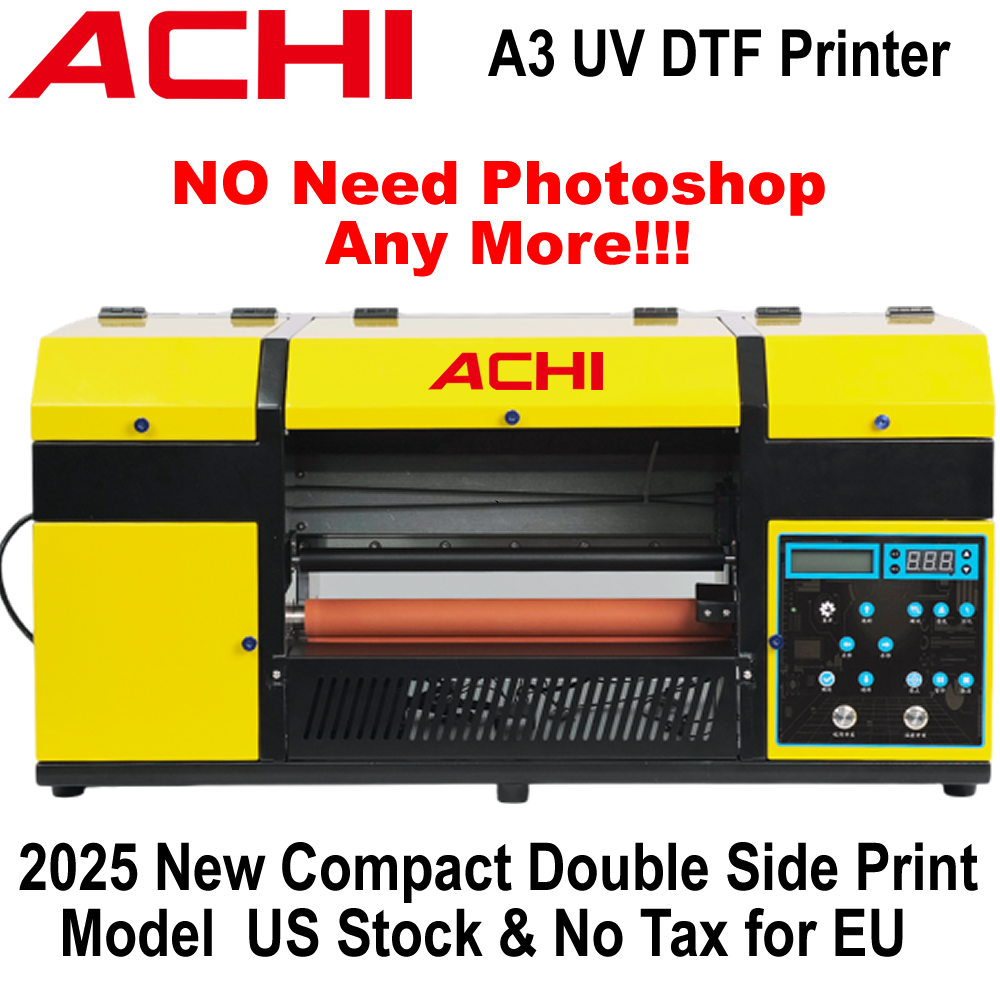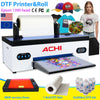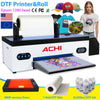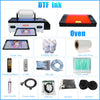ACHI A3 UV DTF Printers and Spot color UV Printing: A Revolution in Embellishment

In the competitive world of print, standing out is everything.
While vibrant colors and striking imagery capture attention, it's often the tactile, luxurious feel of a product that seals the deal.
This is where specialty finishing techniques like Spot UV come into play. Traditionally, applying Spot UV has been a complex, multi-step process.
However, with the advent of advanced technology like the ACHI A3 UV DTF Printer, achieving stunning Spot UV effects has become more accessible and efficient than ever before.
What is Spot UV Printing?
First, let's define the technique. Spot UV is a finishing process that applies a glossy, raised coating to specific, selected areas (the "spots") of a printed piece.
It uses ultraviolet (UV) light to instantly cure and harden a transparent ink or varnish.
The result is a dramatic contrast between the glossy, elevated UV-coated areas and the matte, untouched substrate.
This creates a sophisticated sensory experience that is both visual and tactile, adding significant perceived value, depth, and texture to products like business cards, book covers, packaging, and promotional materials.

The Traditional Challenge
Historically, Spot UV required a dedicated silkscreen printing station after the main item was offset or digitally printed.
This meant creating separate plates for the UV layer, precise manual alignment (registration), and a multi-stage production process.
It was often time-consuming and costly, making it less feasible for short runs or quick-turnaround projects.
The ACHI A3 UV DTF Printer update: Simplifying the Process
This is where innovative printing technology changes the game. The ACHI A3 UV DTF Printer is designed to streamline and democratize this high-end finishing technique.
UVDTF technology involves printing a design onto a special film, which is then transferred onto a substrate. When combined with UV-curable inks, this process becomes incredibly powerful and versatile.

Here’s how the ACHI A3 UV DTF system revolutionizes Spot UV application:
-
Direct Digital Workflow: Forget about silkscreen plates and complex setups. You design your artwork digitally, defining the "spot" areas in your design software (e.g., Miantop Rip,Photoshop). The printer then applies the UV varnish directly onto a transfer film with pinpoint accuracy.
-
Unmatched Precision and Versatility: The piezoelectric print head ensures extremely fine detail, allowing for intricate patterns, sharp text, and delicate logos to be coated with Spot UV without any bleeding or loss of fidelity.
-
Material Compatibility: Unlike some traditional methods, UV DTF printing is not limited to paper or cardstock. The ACHI A3 can apply Spot UV effects to a vast range of materials—including plastic, glass, metal, wood, and leather—opening up endless possibilities for product customization.
-
Ideal for Short Runs and Prototyping: Because there are no plates to make, the process is cost-effective even for a single unit. This is perfect for small businesses, personalized products, and rapid prototyping, allowing designers to experiment with effects without a significant upfront investment.
-
Efficiency and Speed: The process is significantly faster than traditional multi-pass methods. Print, transfer, and cure. This reduces turnaround time and increases productivity for print shops.
The Spot UV DTF Process with an ACHI A3 Printer
The workflow is remarkably straightforward:
-
Step 1: Design. Create your artwork with a separate layer defining the areas for Spot UV gloss.
-
Step 2: Print. The ACHI A3 printer lays down the white ink (for base/underbase if needed), color, and the clear UV varnish layer onto a dedicated AB film.
-
Step 3: Laminating. The printer will directly laminate the B film and A film. The UV inks are cured during this process, making them durable.
-
Step 4: Transfer. Tear off B film from sticker , then stick the A film into product , at last , tear off A film from product , The pretty printing will be transfer to product surface .
-
Posted in
UV DTF printer




